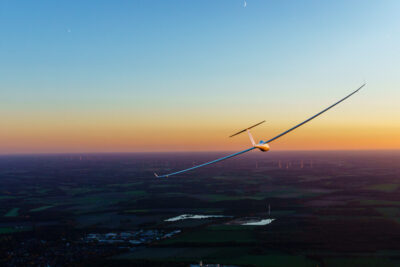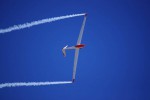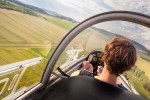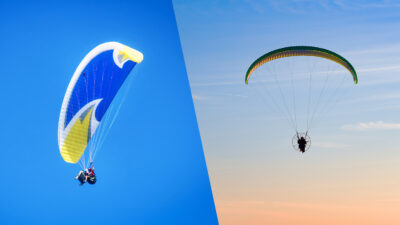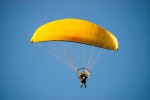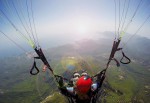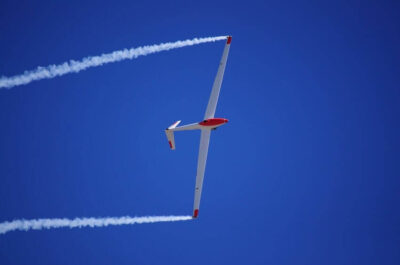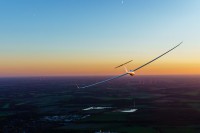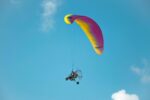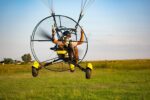Glider Performance: How Many G-Forces Can a Glider Pull?
10 July 2023 | Updated on January 03, 2024
Soaring through the open skies, gliding with the wind, and experiencing the thrill of flight—there’s something utterly freeing about flying a glider. It’s a different kind of flight, one that relies on the very forces of nature to keep you aloft. But just how much of these forces can a glider handle? How many g’s, or gravitational forces, can a glider pull without compromising safety or structural integrity?
Whether you’re a student pilot looking to understand the basics of learning to fly a glider, or an experienced glider enthusiast wanting to deepen your knowledge, this article is geared to provide valuable insights about G-forces in gliders. We will dive into the fascinating world of aerodynamics, exploring the limits of these elegant aircraft, and discussing essential safety considerations.
Understanding G-forces
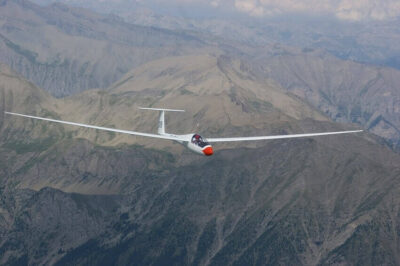
Before diving into how many G’s a glider can pull, it’s important to have a basic understanding of what G-forces are and how they impact flight.
In simple terms, a G-force, short for gravitational force, is a measurement of acceleration felt as weight. It’s the force exerted by gravity on an object, such as a glider or its pilot. When we talk about pulling g’s, we’re referring to the increase in the effective weight that occurs due to rapid changes in motion—like during quick turns or steep dives.
In aviation, understanding G-forces is crucial. They play a significant role in how an aircraft performs, especially during maneuvers. High G-forces can increase stress on the aircraft’s structure and the pilot’s body. On the other hand, low or negative G-forces, experienced in steep descents or inversions, can create sensations of weightlessness or being upside down.
To put G-forces into context, let’s consider a simple example. When you’re standing still or sitting comfortably in your chair reading this article, you’re experiencing 1 g, which is the normal force of gravity. In contrast, if you’ve ever been on a rollercoaster and felt pushed into your seat or pulled upwards against your restraints, those are instances of experiencing more or less than 1 g due to rapid changes in velocity and direction.
In the world of aviation, the effects of G-forces are more pronounced and have higher stakes. Imagine a powered airplane performing a tight turn at high speed. During this maneuver, the pilot might experience forces up to 3 or 4 g’s. This means they feel three to four times their normal weight, which can be physically demanding.
For reference, a trained military fighter pilot may endure up to 9 g’s during certain maneuvers!
How to Calculate G-Forces?
The G-force experienced during a maneuver, particularly a turn, can be calculated using a simple formula derived from basic physics principles. It’s important to note that this formula is relevant for level, coordinated turns where altitude is constant.
The formula for calculating G-force is: G-Force = 1 / cos(θ)
Here, θ (theta) represents the bank angle, which is the angle at which the aircraft is tilted in a turn. This angle is measured in degrees. The cosine (cos) function is a mathematical function that you can calculate using a scientific calculator or a computer software program. The G-force calculated represents how many times the force of gravity you’re experiencing.
For instance, in a 60-degree banked turn, the G-force would be calculated as follows:
G-Force = 1 / cos(60) ≈ 2 g
This means that during a 60-degree turn, you would experience twice the normal force of gravity.
It’s crucial to understand that this formula assumes a perfect, coordinated turn with no changes in altitude, which may not always be the case in real-world flight conditions. Also, remember to convert the angle from degrees to radians if your calculator requires it (most scientific calculators have a setting that lets you switch between degrees and radians).
Also, remember that this formula gives you an idealized G-force value. In practice, various factors such as wind conditions, aircraft speed, and pilot inputs can affect the actual G-forces experienced during flight. As a pilot, it’s crucial to be aware of your aircraft’s G-force limits and to operate within them to ensure safety.
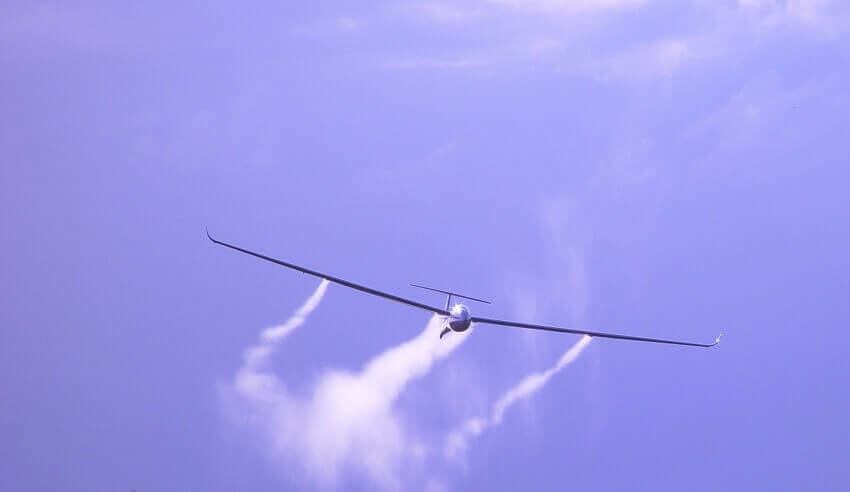
Gliders and G-forces
Gliders, with their sleek design and long wings, are engineered to harness the power of the wind and the sun. Unlike powered aircraft, which use engines for propulsion, gliders depend on natural phenomena like thermals and ridge lift to climb and maintain altitude. This very aspect makes understanding G-forces in gliders a unique and fascinating topic.
So, how many G’s can a glider pull? Most gliders should be able to pull around +3.5 g and – 1.5 g, with some aerobatic gliders able to pull up to +7 g and -5 g.
These values, of course, vary depending on the glider model, design and certification.
Gliders, and airplanes in general, are certified in one of three categories: normal, utility and aerobatic. In Europe, the following G-force limits are defined for each category:
- Normal
- Maximum positive: 3.8 g
- Maximum negative: -1.52 g
- Utility
- Maximum positive: 4.4 g
- Maximum negative: -1.76 g
- Acrobatic
- Maximum positive: 6 g
- Maximum negative: -3 g
A few gliders and their maximum G-force limits:
- Schweizer 1-26: +5.4/-3.5 g
- ASK-13: +4/-2 g
- ASK-21: + 6.5/-4 g
- DG-500: +7/-5 g
- Fox MDM-1: +9.0/-6.0 g (one occupant), +7.0/-5.0 g (two occupants)
- Swift: +10/-7 g
- Pilatus B4: +7/-5 g
- Ventus 2 C: +5.3/-2.65 g
The maximum G-forces or load factor a glider can pull is always mentioned in the aircraftt’s manual. Below is an example extract of the Schweizer 1-26 manual, showing the flight envelope and load factor limits:
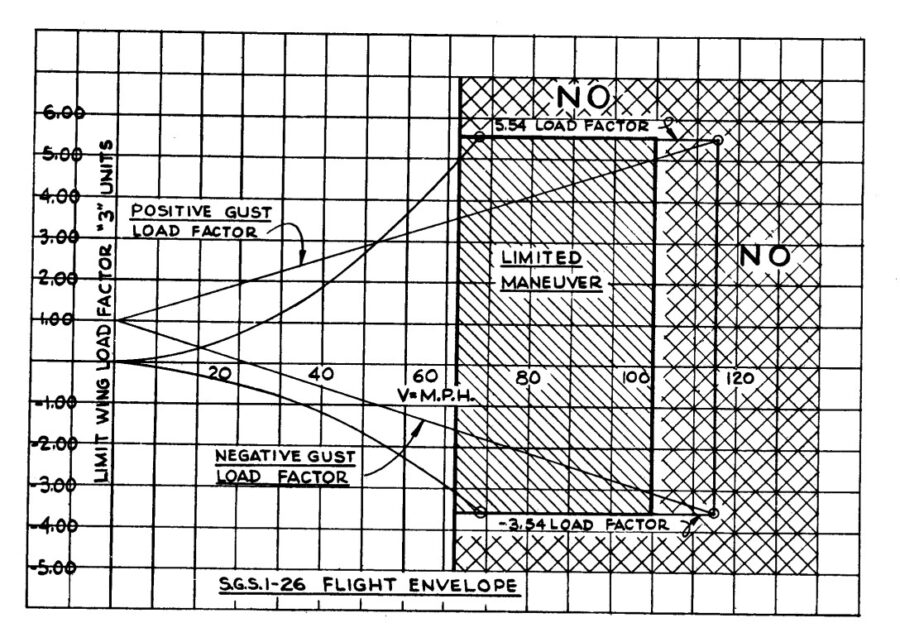
You can find it on page 12 of the manual here: https://prescottsoaring.com/wp-content/uploads/2016/06/126-manual.pdf
It’s important to note that these are general figures and may differ based on the manufacturer’s specifications and limitations of the glider in question. Always refer to your glider’s flight manual for specific limits.
Now that we know the typical G-force range for gliders let’s examine the factors that affect these forces in flight.
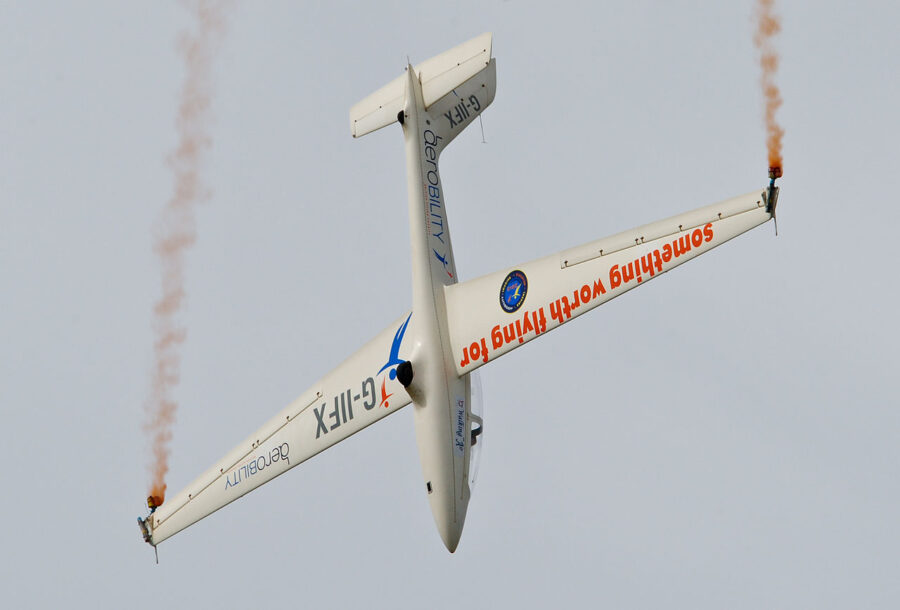
The Fox MDM-1 is one of the most popular and extreme aerobatic gliders, with a g-limit of +9.0/-6.0 g. Photo: Glider FX – Guy Westgate taken at Shoreham Airshow 2013
Factors Affecting G-forces in Gliders
While we now understand the average G-force a glider can handle, it’s crucial to recognize that several factors can influence these forces in flight. Understanding these factors helps pilots manage G-forces effectively and ensure a safe gliding experience.
- Speed: The speed at which a glider enters a maneuver greatly affects the G-forces experienced. Faster entry speeds can lead to higher G-forces, especially during turns. It’s important to maintain appropriate speeds when initiating maneuvers.
- Angle of Turn: The tighter the turn, the greater the G-forces. A steep, tight turn can significantly increase G-forces compared to a gradual, wider turn. Care must be taken to execute smooth, controlled turns.
- Wind Conditions: Wind conditions, particularly gusty winds, can cause sudden changes in G-forces. Pilots need to anticipate these changes and manage their flight path accordingly.
- Glider Design: Different gliders have different design characteristics, such as wing length, shape, and weight. These design elements can affect the glider’s aerodynamics and the G-forces it can handle.
- Pilot Control: Last but not least, the pilot’s control plays a critical role in managing G-forces. Smooth, deliberate control movements help to avoid sudden spikes in G-forces that could put the glider and the pilot at risk.
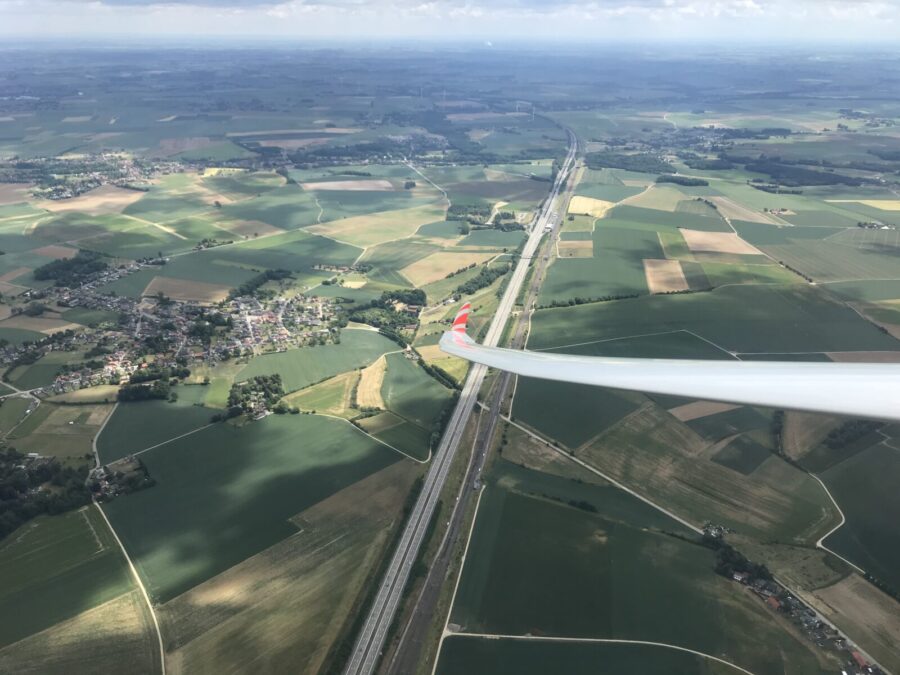
Safety Considerations
While it’s exciting to explore the limits of what a glider can do, safety should always be a pilot’s primary concern. Handling G-forces requires a keen understanding of both the glider’s capabilities and one’s own physiological limitations. Here are some key safety considerations when it comes to managing G-forces in gliders:
- Physiological Effects: High G-forces can have various physiological effects on the body, ranging from increased heart rate to vision impairment (known as greyout or blackout) in extreme cases. Prolonged exposure to high G-forces can lead to G-LOC (G-force induced Loss Of Consciousness). On the other hand, negative G’s can cause a redout, where pilots see red due to the rush of blood to the head. Being aware of these effects and knowing your own limitations is crucial.
- Structural Limits: Every glider has specified structural limits, including maximum G-force loads, set by the manufacturer. Exceeding these limits can cause structural damage and potentially catastrophic failure. Always familiarize yourself with your glider’s limitations and adhere to them strictly.
- Training and Practice: Good training and regular practice are the best ways to understand and safely manage G-forces. Practice maneuvers at safe altitudes and always under the guidance of an experienced instructor.
- Health and Fitness: Good physical health and fitness can help pilots tolerate G-forces better. Regular exercise, proper nutrition, and adequate hydration can boost your G-tolerance.
In summary, while gliders can typically pull 2 to 3 G’s in positive load and -1 G in negative load, managing these forces involves understanding your glider’s capabilities, maintaining proper control, and taking care of your own health and well-being. It’s a combination of science, skill, and self-awareness that makes gliding the graceful and thrilling activity that it is.
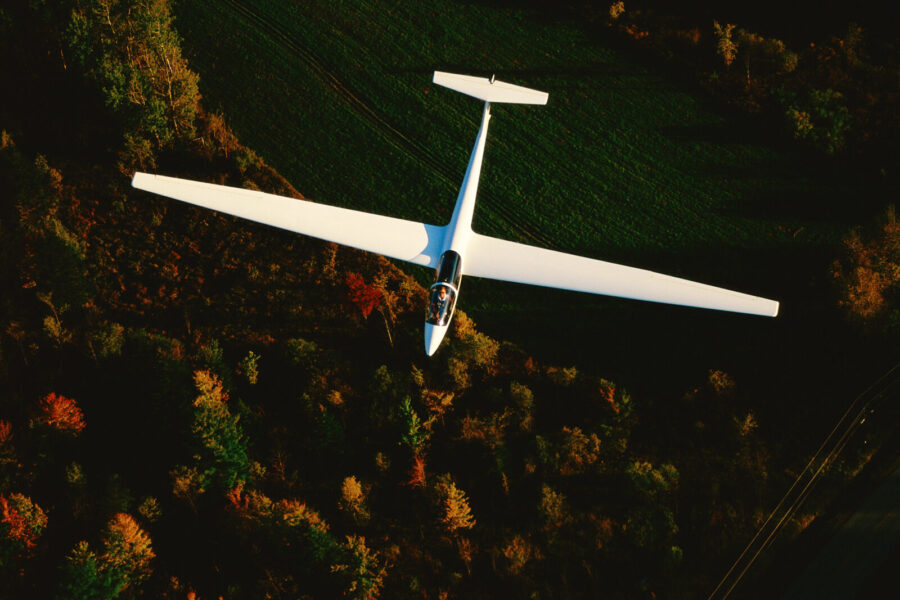
Conclusion
Gliders, with their unique ability to harness natural forces, operate within a specific G-force range that distinguishes them from powered aircraft. Typically, they can handle up to 3 to 4 g’s in positive load and around -1 to -2 g in negative load.
However, the actual G-forces experienced during a glider flight are affected by various factors, such as speed, angle of turn, wind conditions, glider design, and, crucially, pilot control. It is the careful management of these forces that ensures a safe and enjoyable flight.
Happy gliding!
